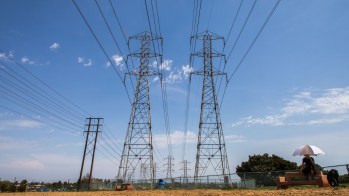California’s governor can’t make it rain. Which is why the price of your salad is likely to go up.
California’s governor can’t make it rain. Which is why the price of your salad is likely to go up.
It’s a beautiful, sunny day in California’s Central Valley. Up and down the West Coast, it’s been sunny for weeks. Anyone who got caught in the recent polar vortex might call that a fantasy.
But this morning, in an official statement, the governor of this agricultural state gave it a different name.
“Today, I am declaring a drought emergency,” Gov. Jerry Brown said. “We’re facing perhaps the worst drought California has ever seen since records began being kept about 100 years ago.”
Brown has been under pressure to make such a declaration for weeks from farmers, farm workers, and the various people who represent them. But as he has said, the governor “can’t make it rain,” official declaration or no. What water there is gets moved around the state, and Brown’s statement does open the door for farmers to ask for a bigger share.
Gayle Holman is with the Westlands Water District, which distributes water to farmers in the state’s Central Valley region. The drought obviously affects jobs for workers and money for farmers there, but the region has major reach.
“Anything that you are consuming for dinner tonight,” she says, “I imagine originated right here in the Central Valley.”
Especially if you’re thinking about a salad: Tomatoes, lettuce, almonds. Glass of wine? That’s nearby, too. Holman says that right now, farmers are holding back from planting about a third of the Central Valley’s 600,000 acres.
Nor is the problem limited to California. Earlier this week, the U.S. Department of Agriculture declared parts of 11 western states official disaster areas. Including all of Oregon, home to a region that produces much of the country’s yellow onion crop.
The effects will be visible in grocery baskets nationwide, says Phil Lembert, who runs Supermarket Guru.
“It means that foods are going to be more expensive,” he says. “Matter of fact, this is not a surprise. We’ve been hearing from the USDA and from the weather folks that we’re going to have more weather problems for probably the next 15 to 20 years.”
Yes, he means climate change. “We’re really seeing the effects of what’s gone on with the climate for the last 50 years,” he says. “There’s no question that the price of our foods will rise because of this.”
There’s a lot happening in the world. Through it all, Marketplace is here for you.
You rely on Marketplace to break down the world’s events and tell you how it affects you in a fact-based, approachable way. We rely on your financial support to keep making that possible.
Your donation today powers the independent journalism that you rely on. For just $5/month, you can help sustain Marketplace so we can keep reporting on the things that matter to you.


















